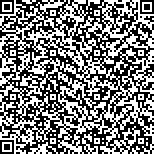下载中心
优秀审稿专家
优秀论文
相关链接
摘要

MODIS 3 km DT(Dark Target)卫星气溶胶光学厚度AOD(Aerosol Optical Depth)数据产品已广泛应用于大气污染监测,但受反演方法限制,该数据产品像元缺失严重、时空覆盖度低、精度偏低。相比,MODIS 10 km DT_DB_Combined AOD数据产品因融合DT和DB(Deep Blue)两种反演算法,一定程度上可弥补MODIS 3 km DT AOD数据产品在时空覆盖度与精度方面的缺陷,但分辨率偏低。此外,受气溶胶组分来源的季节变化与地表反射率估算的季节性误差影响,MODIS AOD数据产品精度同时也存在季节性特征。本文由此以京津冀为试验区,顾及AOD季节变化特性,开展MODIS 10 km DT_DB_Combined AOD数据产品偏差纠正下的地统计反演模拟BGIM(Bias-corrected Geostatistical Inverse Model)降尺度算法研究。试验同时引入AERONET地基观测数据和MODIS 3 km DT AOD数据产品作为降尺度结果的绝对与相对验证标准。结果表明:季节偏差系数纠正下生成的MODIS 3 km DT_DB_Combined AOD与10 km DT_DB_Combined AOD、3 km DT AOD数据产品的绝对精度相当,验证R2分别为0.79、0.70、0.71;且相比MODIS 3 km DT AOD数据产品,季节偏差系数纠正下的MODIS 3 km DT_DB_Combined AOD数据与其相关系数可达0.93;在时间覆盖度和空间覆盖度方面可分别提升11.21%和11.44%,其中春、冬两季空间覆盖度提升效果尤为显著。研究结果证实BGIM降尺度算法可有效估算MODIS 3 km DT_DB_Combined AOD数据,提高MODIS 3 km AOD产品的时空覆盖度,并同时抑制原有MODIS 10 km DT_DB_Combined AOD数据产品的季节性高估现象。
Satellite MODIS Aerosol Optical Depth (AOD) products based on Dark Target (DT) retrieval algorithm at 3 km resolution have been widely used in the ground air pollution monitoring. However, due to the limitations of DT retrieval algorithm, these products missed a large number of pixels with low spatiotemporal coverage and limited accuracy. By contrast, MODIS 10 km DT_DB_Combined AOD products integrate products based on DT and Deep Blue (DB) retrieval algorithms. However, to some extent, DT_DB_Combined AOD products can make up for the coverage and accuracy shortcomings of MODIS 3 km DT AOD data products, the resolution of which is low. Moreover, affected by the seasonal variation of aerosol component sources and the seasonal error of surface reflectance estimation, the accuracy of MODIS AOD data products also exhibits seasonal variation. This study takes Beijing‐Tianjin‐Hebei region as the experimental area and uses MODIS 10 km DT_DB_Combined AOD products as the material. Geostatistical Inverse Model (GIM) downscaling method, which considers the spatial covariance function differences of AOD data products at different scales, is introduced. At the same time, to consider the seasonal variation characteristics of AOD, the seasonal bias correction model for the MODIS 10 km DT_DB_Combined AOD products using accurate AERONET monitoring data is developed. On this basis, the Bias-corrected GIM (BGIM) downscaling algorithm coupled with seasonal bias correction model is further proposed. The AERONET ground observation data and MODIS 3 km DT AOD products are employed as the absolute and relative evaluation reference for the BGIM downscaling results. Results show that the absolute evaluated accuracies of the downscaled MODIS 3 km DT_DB_Combined AOD data, 10 km DT_DB_Combined AOD, and 3 km DT AOD data products are relatively close; the corresponding R2 values are 0.79, 0.70, and 0.71, respectively. Compared with MODIS 3 km DT AOD products, the relative evaluated R result of the seasonal corrected MODIS 3 km DT_DB_Combined AOD data is higher than 0.93. In addition, the temporal coverage and spatial coverage are increased by 11.21% and 11.44%, respectively. The spatial coverage in spring and winter is relatively higher among four seasons. The results confirm that the BGIM downscaling algorithm can not only effectively improve the resolution and accuracy of MODIS 10 km DT_DB_Combined AOD products, but also promote the spatiotemporal coverage compared with MODIS 3 km AOD products.

